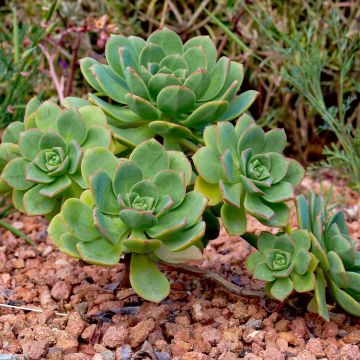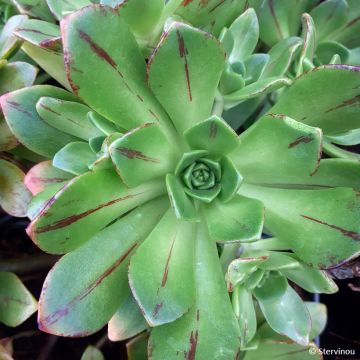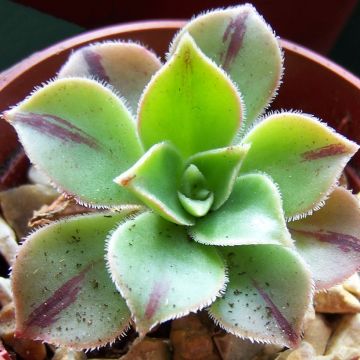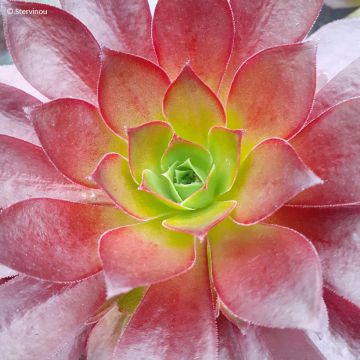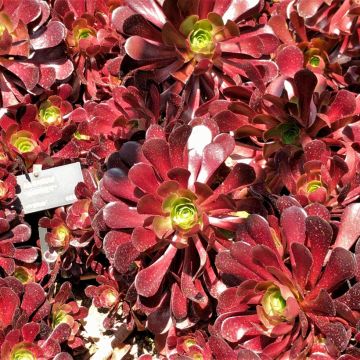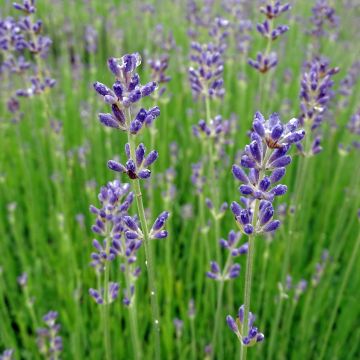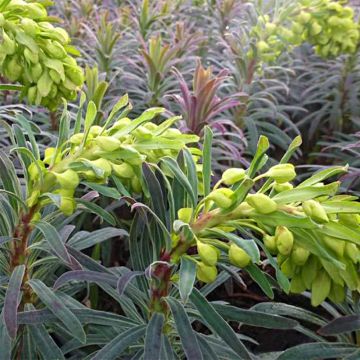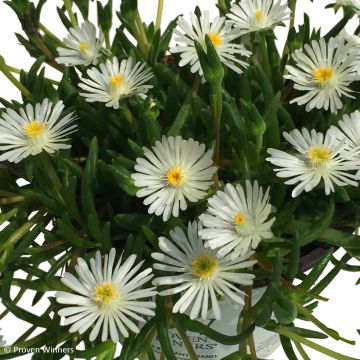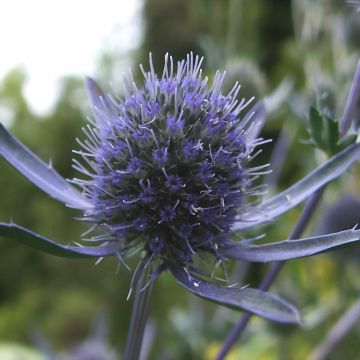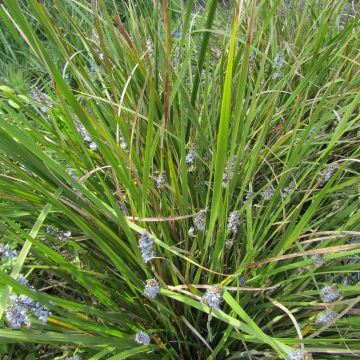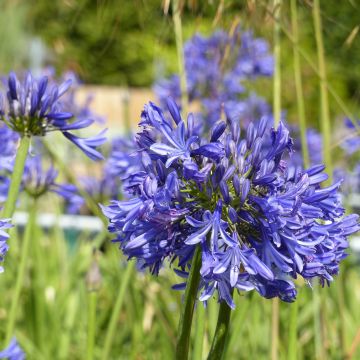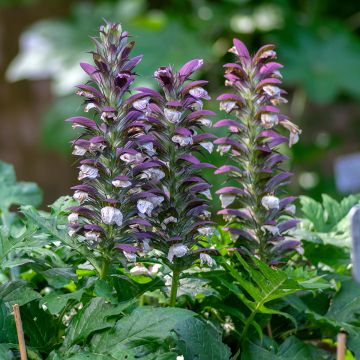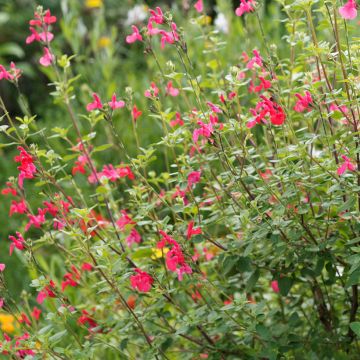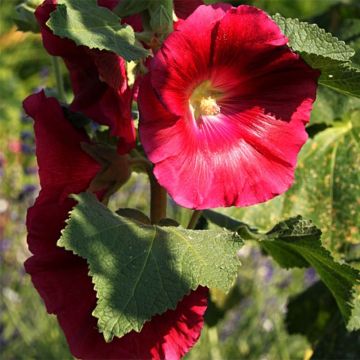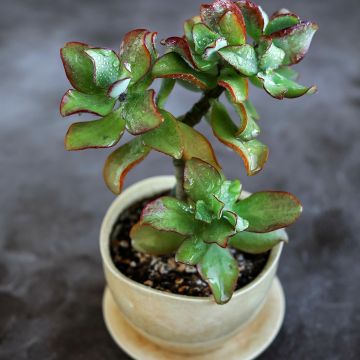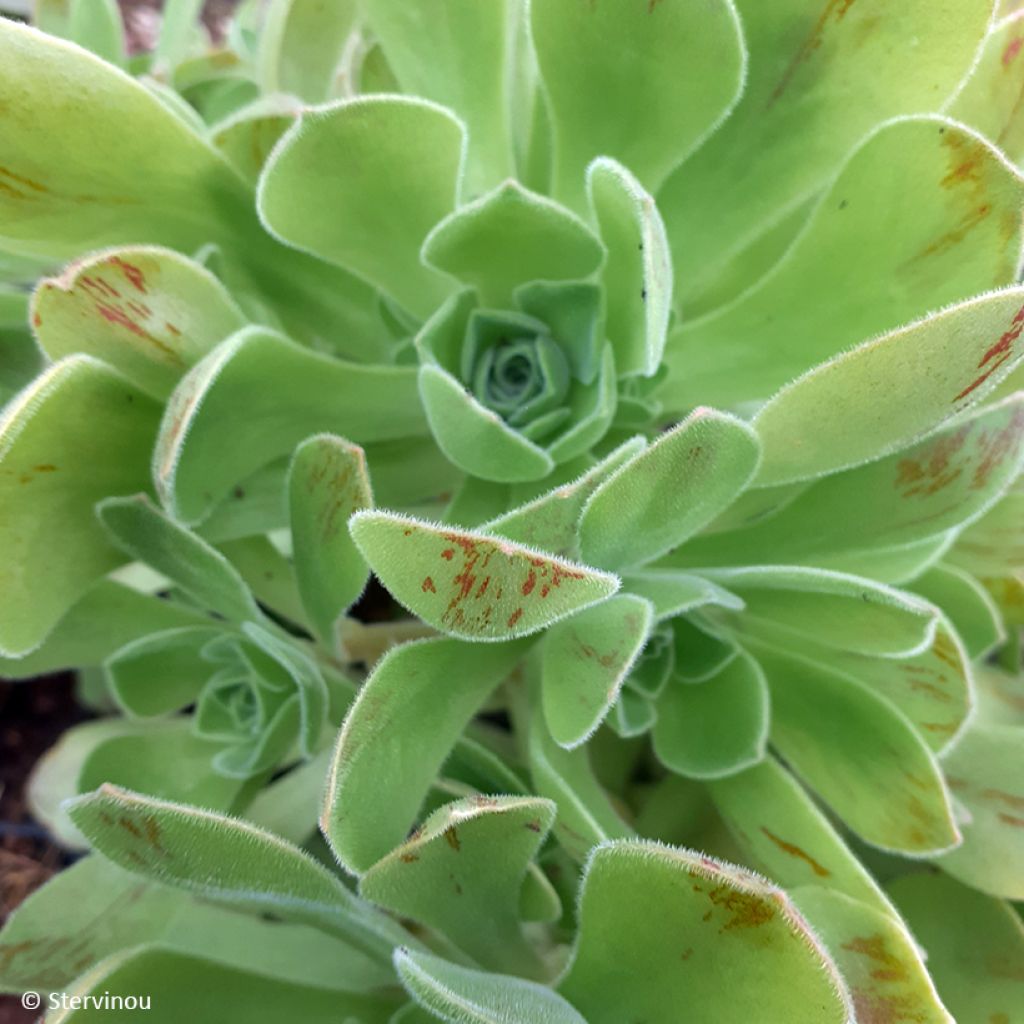

Aeonium Goblin
Aeonium Goblin
Aeonium Goblin
Tree Aeonium, Tree Houseleek, Irish Rose
This item cannot be shipped to the selected country
Delivery charge from €5.90
More information
Schedule delivery date,
and select date in basket
This plant carries a 24 months recovery warranty
More information
We guarantee the quality of our plants for a full growing cycle, and will replace at our expense any plant that fails to recover under normal climatic and planting conditions.
From €5.90 for pickup delivery and €6.90 for home delivery
Express home delivery from €8.90.
Does this plant fit my garden?
Set up your Plantfit profile →
Description
Aeonium 'Goblin' is a curious and highly ornamental succulent plant that over time forms a low, branched tuft resembling a bonsai. Growing quite slowly, it produces large rosettes of leaves in a beautiful tender green, intricately overlapped in a very geometric manner. In summer, the foliage turns to a more or less marked orangish bronze, depending on the sunlight. Its low hardiness, to about -4°C, limits its outdoor cultivation to the mildest areas. Its compactness allows easy pot cultivation elsewhere, perfect for embellishing a terrace or balcony and bringing indoors to a frost-free, bright room in winter.
Aeoniums belong to the Crassulaceae family, which comprises 30 genera and nearly 1400 species. The unique metabolism of these plants, often of small stature, enables them to thrive in very dry environments. Many genera are native to warm climates, such as the commonly seen Kalanchoe indoors or the Aeonium, with 45 species almost exclusively from the Canary Islands. However, some members of the Crassulaceae tolerate cold well, like Sempervivum (Houseleek) or Sedum, used for green roofs. 'Goblin' is a variety introduced in 2016 and derived from the reversion of the Aeonium 'Ballerina', a pale green cultivar variegated with white. Occasionally in variegated plants, some shoots (rosettes here) revert to green; by propagating them, the original species is obtained, or a new plant, as with 'Goblin'. This cultivar is believed to be a hybrid of Aeonium x globosum, itself resulting from a cross between A. canariense var. palmense and A. spathulatum. The former grows close to the ground on the island of Palma, forming large light green rosettes and producing floral stems about thirty centimetres high, bearing small yellow-greenish flowers. The latter forms a small, highly branched plant with well-opened leaf rosettes and beautiful starry yellow flowers.
Aeonium 'Goblin' forms large rosettes of light green leaves, more imposing than those of 'Ballerina' due to higher photosynthetic activity resulting from the absence of variegation (variegated areas lack chlorophyll and do not contribute to the plant's growth). Narrow at the base of insertion, the leaves abruptly widen in the upper third before ending in a more or less rounded tip with a slight terminal point. Interestingly, they are covered in tiny hairs, giving them a unique texture, sometimes slightly sticky. The rosettes are situated at the ends of short stems, which branch out over time, adding volume to the plant. Growing quite slowly, after 10 years of cultivation, the plant forms a compact tuft 35 cm in all directions, with a highly aesthetic geometric appearance. It is even more ornamental in summer, as the rosettes' periphery gradually turns to a golden bronze mixed with pale orange, a colour difficult to describe but very pleasing to the eye and perfectly harmonious with the tender green centre. This Aeonium is mainly prized for its foliage, as its flowering is considered rare in cultivation. The flowering consists of small star-shaped yellow flowers, clustered in corymbs above the foliage mass.
Aeonium 'Goblin' will delight plant enthusiasts with its neat and original design. Its summer colours, unique in the genus, are particularly attractive and soft, deserving a spot on your terrace to adorn it throughout the warm season. In winter, bring the pot indoors to protect it from the cold, in a cool, bright room. In very mild climates where frost is occasional and mild, you can place it in the centre of a bed of exotic plants or within a rockery alongside other distinctive plants. The sculptural Agave celsii 'Nova' with its broad bluish-grey leaves will be a perfect companion. Much hardier Euphorbia myrsinites, or Corsican Spurge, will bring its own architectural touch with stems covered in small bluish-green leaves meticulously arranged in almost perfect geometry, and its terminal flowers blooming in a superb blend of yellow and chartreuse green. For a beautiful contrast of shapes and colours, plant a Red Yucca (Hesperaloe parviflora), forming a tuft of long, delicately thin leaves, dominated in summer by long coral-red flower spikes.
Report an error about the product description
Plant habit
Flowering
Foliage
Botanical data
Aeonium
Goblin
Crassulaceae
Tree Aeonium, Tree Houseleek, Irish Rose
Cultivar or hybrid
Other Aeonium
Planting and care
Aeonium 'Goblin', resistant to heat and drought, requires light, perfectly drained, sandy, poor, even slightly chalky soil. Plant it in spring, after the last frosts, in open ground, in a mild coastal, warm and dry climate. You can plant it in pots all year round, sheltered from frost of course. It thrives best in full sun (or possibly in partial shade in the South) and likes to have the roots warm. Originating from the Canaries, it is sensitive to frost and can only be planted outdoors in a very mild climate, where frost is occasional and not intense. Overwinter this plant in an unheated, but frost-free and very bright room. Water moderately from autumn to spring, and sparingly in summer. Remove faded inflorescences and dead branches.
Planting period
Intended location
Care
This item has not been reviewed yet - be the first to leave a review about it.
Mediterranean perennials
Haven't found what you were looking for?
Hardiness is the lowest winter temperature a plant can endure without suffering serious damage or even dying. However, hardiness is affected by location (a sheltered area, such as a patio), protection (winter cover) and soil type (hardiness is improved by well-drained soil).

Photo Sharing Terms & Conditions
In order to encourage gardeners to interact and share their experiences, Promesse de fleurs offers various media enabling content to be uploaded onto its Site - in particular via the ‘Photo sharing’ module.
The User agrees to refrain from:
- Posting any content that is illegal, prejudicial, insulting, racist, inciteful to hatred, revisionist, contrary to public decency, that infringes on privacy or on the privacy rights of third parties, in particular the publicity rights of persons and goods, intellectual property rights, or the right to privacy.
- Submitting content on behalf of a third party;
- Impersonate the identity of a third party and/or publish any personal information about a third party;
In general, the User undertakes to refrain from any unethical behaviour.
All Content (in particular text, comments, files, images, photos, videos, creative works, etc.), which may be subject to property or intellectual property rights, image or other private rights, shall remain the property of the User, subject to the limited rights granted by the terms of the licence granted by Promesse de fleurs as stated below. Users are at liberty to publish or not to publish such Content on the Site, notably via the ‘Photo Sharing’ facility, and accept that this Content shall be made public and freely accessible, notably on the Internet.
Users further acknowledge, undertake to have ,and guarantee that they hold all necessary rights and permissions to publish such material on the Site, in particular with regard to the legislation in force pertaining to any privacy, property, intellectual property, image, or contractual rights, or rights of any other nature. By publishing such Content on the Site, Users acknowledge accepting full liability as publishers of the Content within the meaning of the law, and grant Promesse de fleurs, free of charge, an inclusive, worldwide licence for the said Content for the entire duration of its publication, including all reproduction, representation, up/downloading, displaying, performing, transmission, and storage rights.
Users also grant permission for their name to be linked to the Content and accept that this link may not always be made available.
By engaging in posting material, Users consent to their Content becoming automatically accessible on the Internet, in particular on other sites and/or blogs and/or web pages of the Promesse de fleurs site, including in particular social pages and the Promesse de fleurs catalogue.
Users may secure the removal of entrusted content free of charge by issuing a simple request via our contact form.
The flowering period indicated on our website applies to countries and regions located in USDA zone 8 (France, the United Kingdom, Ireland, the Netherlands, etc.)
It will vary according to where you live:
- In zones 9 to 10 (Italy, Spain, Greece, etc.), flowering will occur about 2 to 4 weeks earlier.
- In zones 6 to 7 (Germany, Poland, Slovenia, and lower mountainous regions), flowering will be delayed by 2 to 3 weeks.
- In zone 5 (Central Europe, Scandinavia), blooming will be delayed by 3 to 5 weeks.
In temperate climates, pruning of spring-flowering shrubs (forsythia, spireas, etc.) should be done just after flowering.
Pruning of summer-flowering shrubs (Indian Lilac, Perovskia, etc.) can be done in winter or spring.
In cold regions as well as with frost-sensitive plants, avoid pruning too early when severe frosts may still occur.
The planting period indicated on our website applies to countries and regions located in USDA zone 8 (France, United Kingdom, Ireland, Netherlands).
It will vary according to where you live:
- In Mediterranean zones (Marseille, Madrid, Milan, etc.), autumn and winter are the best planting periods.
- In continental zones (Strasbourg, Munich, Vienna, etc.), delay planting by 2 to 3 weeks in spring and bring it forward by 2 to 4 weeks in autumn.
- In mountainous regions (the Alps, Pyrenees, Carpathians, etc.), it is best to plant in late spring (May-June) or late summer (August-September).
The harvesting period indicated on our website applies to countries and regions in USDA zone 8 (France, England, Ireland, the Netherlands).
In colder areas (Scandinavia, Poland, Austria...) fruit and vegetable harvests are likely to be delayed by 3-4 weeks.
In warmer areas (Italy, Spain, Greece, etc.), harvesting will probably take place earlier, depending on weather conditions.
The sowing periods indicated on our website apply to countries and regions within USDA Zone 8 (France, UK, Ireland, Netherlands).
In colder areas (Scandinavia, Poland, Austria...), delay any outdoor sowing by 3-4 weeks, or sow under glass.
In warmer climes (Italy, Spain, Greece, etc.), bring outdoor sowing forward by a few weeks.

































